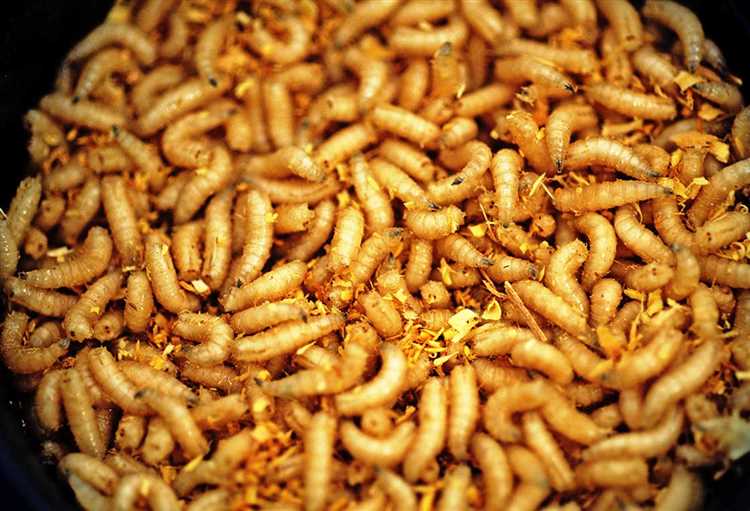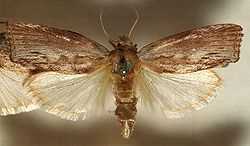Wax worms, also known as Galleria mellonella, are the larvae of the greater wax moth. These small, white caterpillars are commonly used as bait for fishing and as food for reptiles and birds. Recently, they have gained attention for their potential as a sustainable source of protein. However, many people wonder if these tiny creatures can bite humans.
The good news is that wax worms are not known to bite humans. Their mouthparts are not designed for biting or chewing. Instead, they use their mandibles (jaws) to rasp and chew through beeswax, which is their preferred food source. While they may nibble on human skin out of curiosity or if they mistake it for something edible, their bites are not harmful and usually do not cause any pain or discomfort.
It’s important to note that wax worms are not venomous and do not possess any venom glands. Their bites do not inject any toxins into the skin. However, some people may experience mild skin irritation or allergic reactions if they come into contact with wax worms, similar to other insect bites or skin irritants. If you have a known allergy to insect bites or have sensitive skin, it’s always a good idea to avoid direct contact with wax worms.
- Can Wax Worms Bite Humans?
- Understanding Wax Worms
- Life Cycle
- Ecological Importance
- Do Wax Worms Pose a Threat to Humans?
- Cases of Wax Worm Bites
- Preventing Wax Worm Bites
- Conclusion
- Precautions to Take
- Q&A:
- Can wax worms bite humans?
- Are wax worms dangerous to humans?
- How can I prevent wax worm bites?
- What should I do if I get bitten by a wax worm?
Can Wax Worms Bite Humans?
Wax worms, also known as Indianmeal moth larvae, are commonly used as fishing bait and as feed for reptiles and birds. While they may seem harmless, there have been reports of wax worms biting humans in certain circumstances.
Wax worms have a mouthpart called a mandible that they use to chew through materials such as beeswax and plastic. This mandible can also cause pain and minor injury if it comes in contact with human skin.
However, it is important to note that wax worms are not typically aggressive towards humans and will only bite if they feel threatened or cornered. In most cases, their bite is not dangerous and may cause only a mild discomfort similar to a small pinch.
To prevent wax worm bites, it is important to handle them with care and avoid touching them unnecessarily. If you do get bitten by a wax worm, clean the affected area with soap and water and apply an antiseptic if necessary.
It is worth mentioning that individual reactions to wax worm bites can vary. Some people may be more sensitive to the bite and experience a stronger reaction, while others may not feel any discomfort at all.
If you are concerned about the potential for wax worm bites, it is best to take precautions such as wearing gloves when handling them or using tools to interact with them instead of your bare hands.
In conclusion, while wax worms have the ability to bite humans, it is not a common occurrence and is usually only a minor annoyance. By handling them properly and taking necessary precautions, the risk of being bitten can be minimized.
Understanding Wax Worms

Wax worms are the larvae of the wax moth, a common pest that infests beehives. They are known for their ability to consume beeswax and are often used as fishing bait or as a food source for reptiles and birds.
Despite their small size, wax worms can be quite active and are capable of moving quickly. They have a soft body and are typically whitish in color, with a darker head and a few small bristles. They also have a characteristic scent, which has been described as “sweet” or “honey-like.”
Life Cycle
Wax worms undergo a complete metamorphosis, starting as eggs and progressing through several stages before becoming fully grown moths. The entire life cycle typically takes around two months, though this can vary depending on environmental conditions.
After hatching from their eggs, the wax worm larvae begin to feed on the beeswax and other materials in the beehive. They spin silk threads to create a web-like structure, which helps protect them from predators and provides them with a place to pupate.
Once they have finished feeding and reached maturity, the wax worm larvae will pupate and transform into moths. The adult wax moths have wings and are capable of flying, though they are not strong fliers and are generally nocturnal.
Ecological Importance
While wax worms are considered pests in beehives, they do play a role in the ecosystem. They help break down beeswax and other organic matter, contributing to decomposition and nutrient cycling. Additionally, the wax moths themselves serve as a food source for other animals, such as bats and certain bird species.
However, it is important to note that wax moths can cause significant damage to beehives if their population becomes too large. They can weaken the hive structure and consume large amounts of honey, potentially leading to the death of the colony.
Overall, understanding the life cycle and ecological role of wax worms is important for beekeepers and those who rely on wax worms as a food source or fishing bait. By being aware of their behavior and proper management techniques, it is possible to mitigate any negative impacts and maintain a healthy ecosystem.
Do Wax Worms Pose a Threat to Humans?
Wax worms, the larvae of the wax moth, are commonly used as bait for fishing and as a food source for certain animals. While they may not pose a direct threat to humans, there are a few things to keep in mind when handling wax worms.
Firstly, wax worms have small sharp jaws that they use to chew through beeswax and honeycombs. While it is unlikely for them to bite humans, handling them with bare hands may result in minor scratches or pricks.
Additionally, wax worms have been known to carry bacteria and parasites. These can potentially be transferred to humans through contact with the larvae or their waste. It is important to handle wax worms with care and wash your hands thoroughly after handling them to reduce the risk of any potential infections.
Furthermore, some individuals may have an allergic reaction to wax worms. Symptoms of an allergic reaction can include itching, redness, or swelling. If you develop any of these symptoms after handling wax worms, it is recommended to seek medical attention.
Overall, while wax worms may not pose a serious threat to humans, it is still important to handle them with caution and take necessary precautions to minimize any potential risks.
Cases of Wax Worm Bites
Although wax worms are generally not considered a threat to humans, there have been rare cases of wax worm bites reported. These cases usually involve direct contact with the worms, such as handling them or accidentally getting bitten by one.
One known case of a wax worm bite occurred when a person was handling a container of live wax worms and felt a sudden pinch on their finger. Upon inspection, they found that a wax worm had bitten them. The bite resulted in minor irritation and redness, similar to a mosquito bite.
Another case involved a person who accidentally stepped on a wax worm while barefoot. The wax worm, feeling threatened, bit the person’s foot in self-defense. The bite caused a slight puncture wound and mild discomfort, but no serious complications.
Preventing Wax Worm Bites
- Wear protective gloves when handling live wax worms.
- Avoid direct contact with wax worms whenever possible.
- Ensure that containers of wax worms are securely sealed to prevent accidental exposure.
- If you do get bitten by a wax worm, wash the affected area with soap and water, and apply an antiseptic to prevent infection.
- Seek medical attention if you experience severe pain, swelling, or signs of infection after a wax worm bite.
Conclusion

While cases of wax worm bites are rare, it’s important to take precautions when handling these insects to reduce the risk of getting bitten. By following the preventive measures mentioned above, you can minimize the chances of experiencing any discomfort or complications from a wax worm bite.
Precautions to Take
When handling wax worms, it is important to take certain precautions to avoid any potential harm or discomfort:
1. Wear protective gloves: Since wax worms have tiny, sharp mandibles, it is wise to wear gloves to prevent any accidental bites or scratches.
2. Handle with care: Wax worms may become agitated when handled, so it is best to handle them gently and avoid sudden movements that may startle or stress them.
3. Use a soft, safe container: When transporting or storing wax worms, use a container that is secure, well-ventilated, and escape-proof to prevent any accidental releases or escapes.
4. Keep away from children and pets: Wax worms should be kept out of reach of small children and pets to prevent any accidental ingestion or harm.
5. Practice good hygiene: After handling wax worms, make sure to wash your hands thoroughly with soap and water to remove any traces of dirt or bacteria.
By following these precautions, you can safely handle wax worms without any worries of bites or injuries.
Q&A:
Can wax worms bite humans?
Yes, wax worms are capable of biting humans, but it is very rare. Their mouths contain small, sharp mandibles that they use to chew through materials such as wax and honeycomb. However, they are not typically aggressive towards humans and will only bite if they feel threatened or trapped.
Are wax worms dangerous to humans?
Wax worms are generally not dangerous to humans. While they are capable of biting, their bite is usually harmless and painless. However, it is possible for some people to have an allergic reaction to the bite, which could cause redness, swelling, or itching. If you are concerned about potential allergies or discomfort, it is best to avoid direct contact with wax worms.
How can I prevent wax worm bites?
To prevent wax worm bites, it is important to handle them with care and avoid provoking them. If you need to handle wax worms, it is recommended to use gloves or other protective gear to minimize the chance of a bite. Additionally, providing them with a suitable environment and proper food will help keep them content and less likely to feel threatened.
What should I do if I get bitten by a wax worm?
If you get bitten by a wax worm, there is usually no need to panic. Their bite is typically harmless, and may only cause minimal discomfort. Clean the bitten area with soap and water to prevent infection, and apply an antiseptic or antibiotic ointment if desired. If you experience any unusual symptoms or an allergic reaction to the bite, it is advisable to seek medical attention.